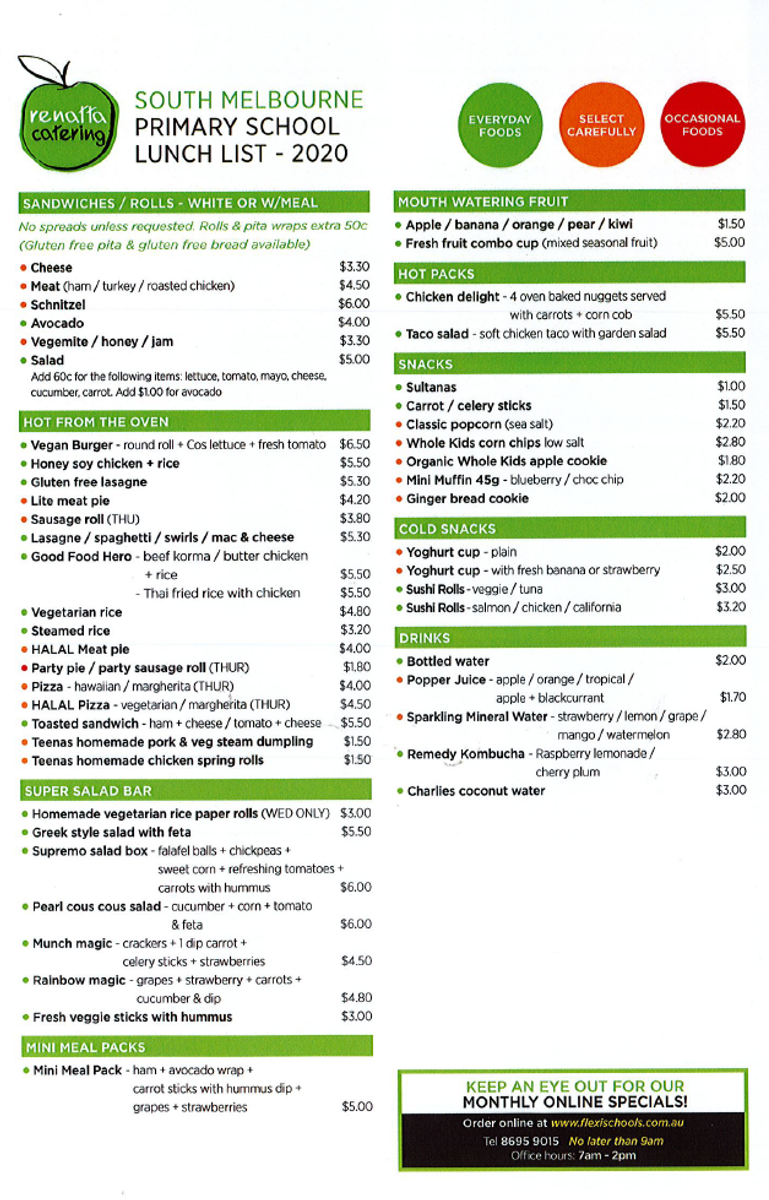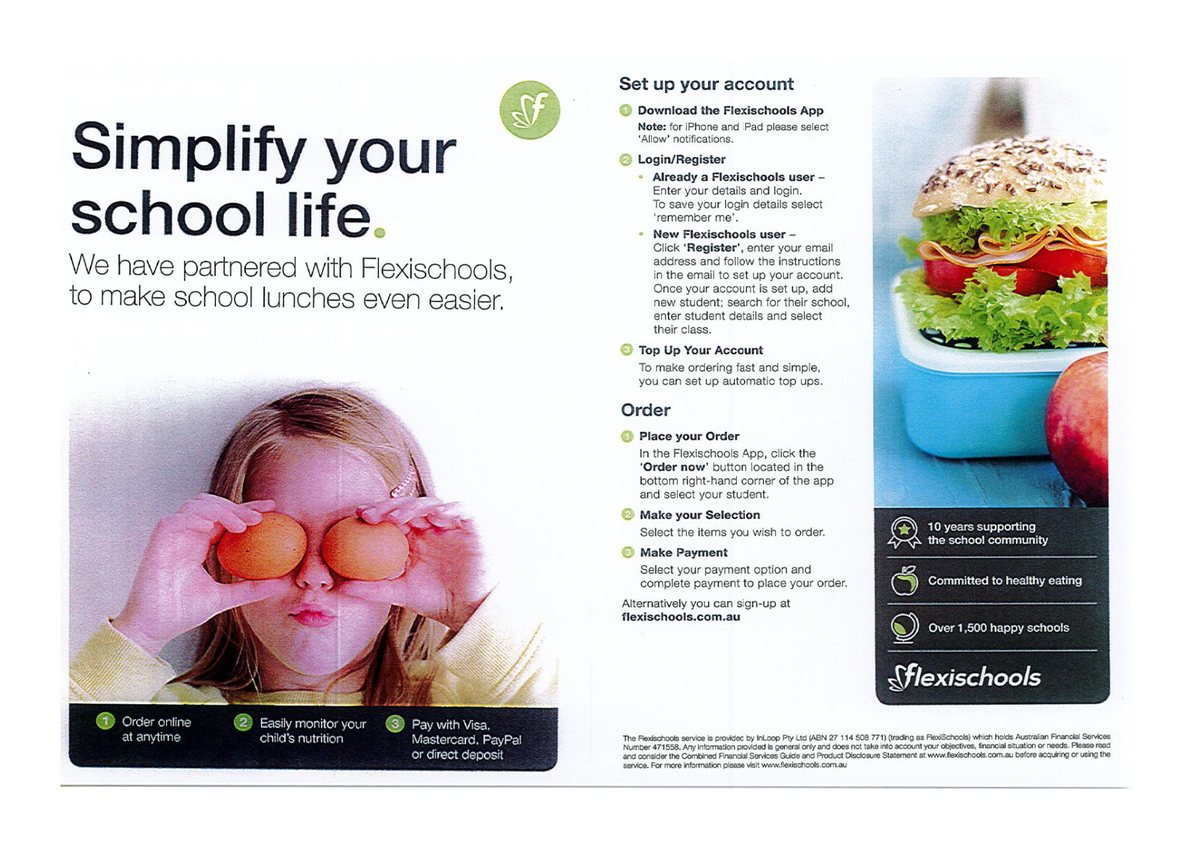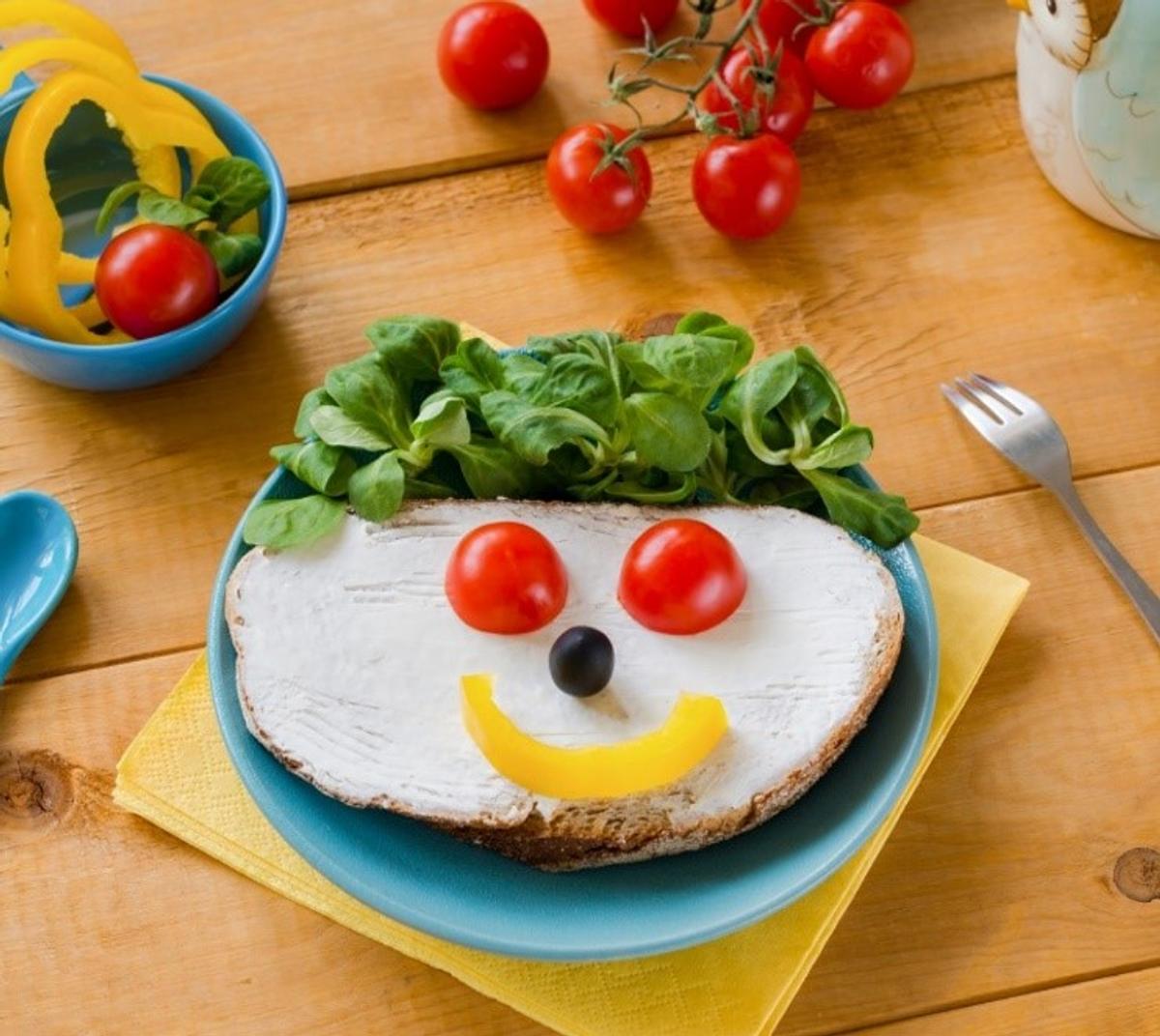Community Notices
From our community

Community Notices
From our community
Please ensure any student or parent using the Bike Shed is closing the gate after placing your bike/scooter in or taking it out at the end of the day. We highly recommend that you use your own bike lock as an added protection in case someone does happen to leave the gate unlocked. South Melbourne Primary does not take responsibility for damaged or lost bikes/scooters in the bike shed. If you require the lock code, please contact the office.
South Melbourne Primary School follows the Healthy Eating Guidelines and encourages parents to provide healthy, nutrient dense foods for their child. With this in mind, we offer the option of lunch orders through our preferred catering company, Renatta Catering. Orders can be placed with our on-line partner Flexischools. Renatta Catering's primary school menu is audited by Nutrition Australia and each item is rated and placed in the traffic light system to make it clear and easy to parents and students when choosing the correct foods. Our Flexischools partner details and Renatta Catering Menu are below for you. Orders must be placed no later than 9am.




Did you know that we have an SMPS Facebook page? Feel free to 'like' it to see celebrations of our days at school.
Click on the icon below and save the page to favourites.
Welcome to the Wellbeing corner supported by Star Health. Here you will find tips and strategies for keeping yourself healthy. Our Term 4 focus is ‘Stay Well’.
We will be sharing tips on how we can all look after our health and wellbeing.
Tips to get kids to eat more veggies and fruit
Healthy eating is essential for children’s good health, growth and development. It also helps children learn at school. Key to eating well is eating the recommended number of veggies and fruit daily. From 9 years old, children are recommended to eat 5 serves of veggies and 2 serves of fruit daily, just like adults. Here are some tips to encourage children to eat more veggies and fruit:


Source: Queensland Health
On-Line Art Classes


Football Star Academy


COVID Safe Plan here:
Tennis with Mike